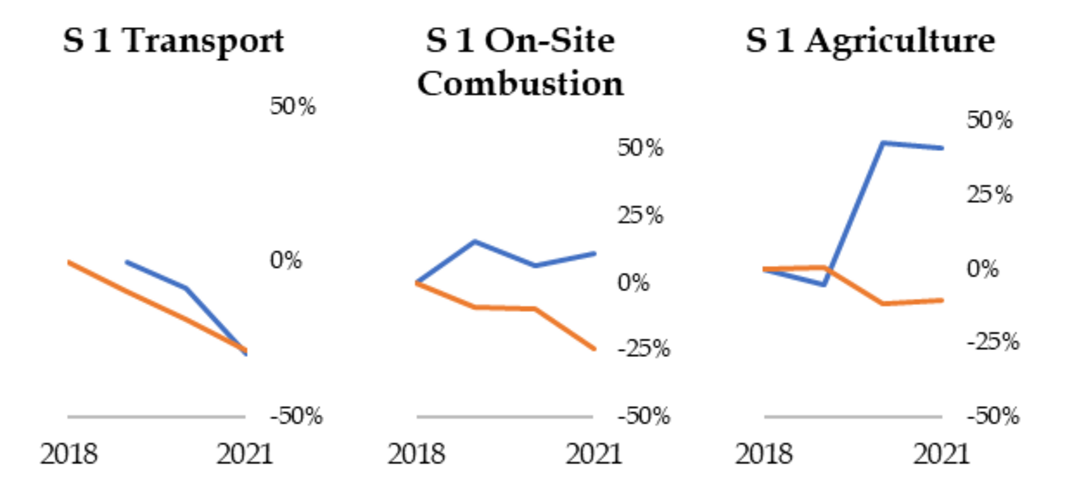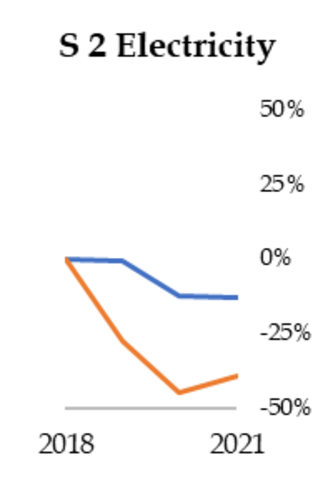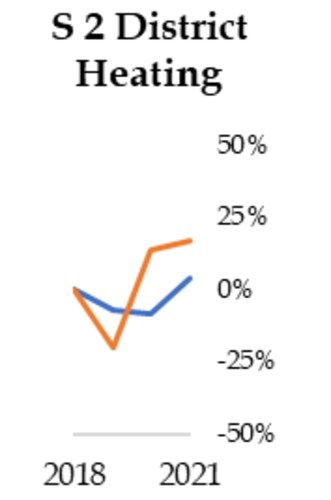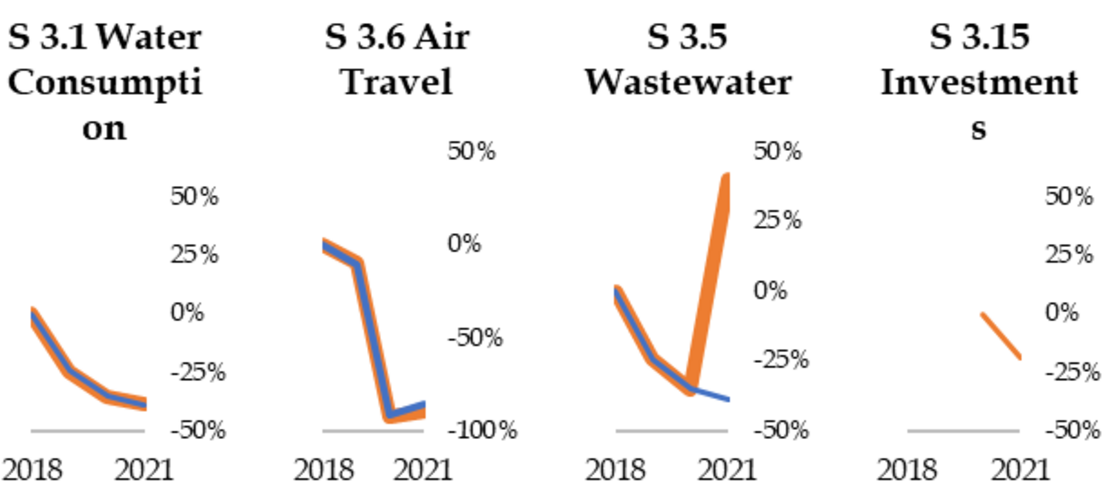Greenhouse gas emissions report 2021
STADS is up and running
STADS is once again up and running, and you can register for spring classes and exams. The registration deadline is Thursday 7 November at 23.59.
On this page, you’ll find a summary of Arhus University's 2021 greenhouse gas emissions report. Click the bar at the top right if you want to read the report in its entirety.
Aarhus University greenhouse gas emissions report 2021 – summary
AU’s just-released 2021 GHG emissions report shows virtually no change in the university’s carbon emissions in 2021 over 2020.
According to the GHG emissions report for 2021, there were both positive and negative developments in the university’s emissions that resulted in a marginal decrease – one per cent – over 2020 on the parameters measured using the process-based method [link til boks om den procesbaserede metode]. This represents a total reduction over the 2018 baseline of 37%.
More specifically, the GHG emissions report shows that:
- Although the university reduced its power consumption, the energy mix in 2021 included fewer renewable energy sources than in 2020, and as a result, there was no appreciable reduction in emissions.
- The indirect carbon emissions from the university’s investments (Scope 3.15 in the report) included in the report fell by 19%.
- Consumption of heat in the university’s buildings increased, however with only a slight resulting increase in emissions.
- Travel activity increased over 2020, when Covid restrictions severely limited staff travel activity.
Methods used to measure emissions
The figures in AU’s GHG emission reports calculated using the process-based method are to a large extent comparable over time. At the same time, as methods of calculation are refined and new data becomes available, AU’s reports will be expanded and adjusted; as a consequence, there are new elements in this report that were not included in previous years, and which cannot be compared with previous years.
Two different methods were used to measure carbon emissions in this report: an activity-based method, which has been used in all of AU’s GHG emissions reports, as well as a consumption-based method based on financial data which was used for the first time in 2020.
Process-based method
According to the process-based method of measuring emissions, a specific emission factor is assigned to each concrete unit consumed (for example, kW power consumed).
Consumption-based method
The consumption-based method measures emissions based on the amount of money the university spends within different categories defined by the university’s accounting system. The amount spent within a specific category (such as IT hardware) is assigned a relevant emission factor in order to measure carbon emissions from purchases within the category.
The advantage of using this method in addition to the process-based method based on financial reporting is that it allows us to include elements that the activity-based method doesn’t cover. However, because it’s based on financial figures, this method is less suited to comparing developments in emissions over time, as greater spending, all things being equal, results in higher emissions. But overall, the university gains a more accurate overview of its actual emissions by using both methods.
Visual comparison
The models below show the trends in activity and CO2 emissions within scopes 1,2 and 3 in 2018 and 2021 respectively, as measured using the process-based method.
Results for scope 1
AU's CO2 emissions in scope 1 are based on data from the following sources:
- Power/heat production
- Transport: the research ship Aurora, AU vehicles (in terms of number of kilometres driven) + employee-owned vehicles (in terms of number of kilometres driven during working hours).
AU CO2 emissions in scope 1 = 5,811 tonnes CO2-eq
Results for scope 2
Scope 2 is general upstream emissions of energy and is based on data from the following sources:
- Heating
- Electricity
- Cooling
AU CO2 emissions in scope 2 = 8,717 tonnes CO2-eq
Results for scope 3
Scope 3 includes all upstream and downstream indirect emissions from AU and constitutes a large and complex share of the total CO2 inventory for all enterprises, including AU. This means it is not possible to measure scope 3 as precisely as scopes 1 and 2. However, progress is being made.
AU CO2 emissions in scope 3 = 5,795 tonnes CO2-eq
Total emissions
As measured using the consumption-based method, purchased goods and services (scopes 3.1 and 3.2 in the report) accounted for 39,692 tonnes CO2-eq.
As measured using the process-based method, total emissions for scopes 1,2 and 3 were 20.323 tons CO2-eq.
AUs total emissions for 2021: 60,015 tonnes CO2-eq.
Greenhouse Gas Protocol
This approach is used by both companies and public institutions as a framework for determining the company's/institution's CO2 emissions. It is a globally applied and recognised method, and it is used by other universities all over the world. This method makes it possible to compare CO2 emissions across universities.
The Greenhouse Gas Protocol operates with three scopes. 5,000-7,000 companies and institutions use the tool globally. Fewer than 10% of them use scope 3.
Scope 1, 2 and 3
Aarhus University's GHG emissions report is based on the Greenhouse Gas Protocol (GHG Protocol), which is a recognised method of calculating emissions of greenhouse gases by converting them into CO2 equivalents divided into three so-called scopes:
- Direct emissions from the university's property, e.g. from boilers or combined heat and power production at AU, as well as in connection with the use of motor vehicles, operating the research vessel Aurora, or emissions from agricultural activities.
- Indirect emissions related to the university's purchase of heating, electricity and cooling, for example.
- Value-chain emissions, which include purchases and air travel.
AU is also collaborating with the other universities in Denmark to develop a common methodology for GHG inventories in the university sector. The objective is to develop a common methodology with associated guidelines.
CO2 equivalents
CO2 equivalents are a conversion factor for comparing the impact of different greenhouse gases on the greenhouse effect. It has been calculated how many tonnes of CO2 are required to cause the same greenhouse effect as one tonne of another gas. This figure is the gas's CO2 equivalent.



